What Does Red Mean in Japanese Culture?
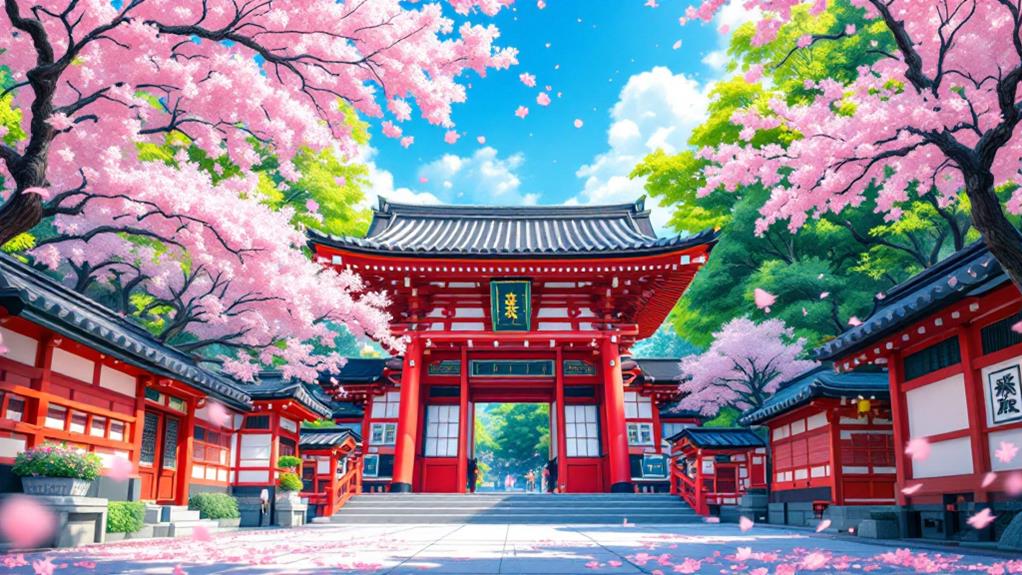
In Japanese culture, red is a lively symbol linked to protection, purity, and joy. You'll find red on Shinto torii gates and ceremonial objects, marking the sacred and safeguarding against evil spirits. It's a popular color for weddings, with brides wearing red kimonos symbolizing happiness and good fortune. Festivals gleam with red lanterns and decorations, creating a festive and prosperous atmosphere. In arts like ukiyo-e and calligraphy, red captures emotions and authenticity. Fashion trends incorporate red to convey passion and elegance. If you're curious about how red weaves itself into diverse Japanese traditions, there's much more to uncover.
Symbolism of Red in Shinto
In Shinto, red carries profound symbolic importance, representing protection and liveliness. When you visit a Shinto shrine, you'll often notice the striking red gates, known as torii. These structures don't just catch your eye; they serve a critical function by marking the boundary between the mundane and the divine. The color red here acts as a protective force, safeguarding the sanctity of the space and those who enter it. Moreover, red plays a significant role in purification rituals, which involve cleansing impurities to create spiritually clean spaces. Shinto believes that red wards off evil spirits, offering a sense of security to worshippers.
As you explore deeper into Shinto practices, you'll find that red also symbolizes purity. This might seem surprising, as you often associate purity with white. However, in Shinto, red's purifying power comes from its ability to banish malevolent influences and maintain spiritual cleanliness. When you see red used in shrine decorations, garments, or even in the ribbons tied to trees, it's not just about aesthetics. It's a deliberate choice to invoke both protection and purity, ensuring that the spiritual experience remains untainted. By understanding these symbolic meanings, you gain a richer appreciation for how deeply rooted red is in Shinto beliefs.
Red in Traditional Ceremonies
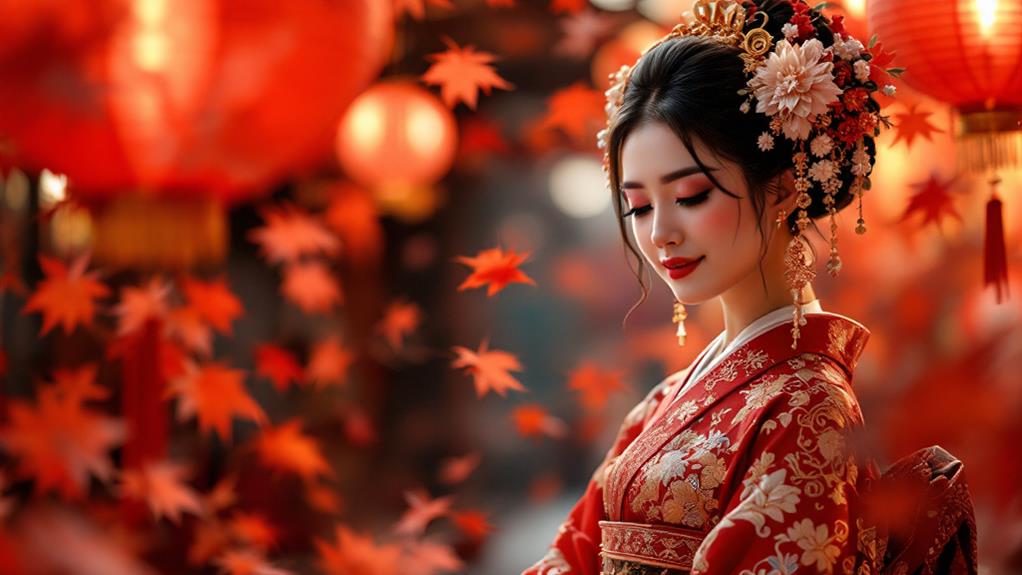
Red plays a significant role in traditional Japanese ceremonies, infusing them with liveliness and meaning. When you attend these ceremonies, you'll notice that red clothing often symbolizes joy and celebration. It's a color that stands out, especially in weddings where the bride might wear a red kimono, representing happiness and good fortune. The use of red isn't limited to attire; it's prevalent in numerous ceremonial objects too. In Japanese weddings, for instance, you might see red items like decorative fans or umbrellas, which are not only beautiful but also carry significance. These objects symbolize protection against evil and invite prosperity. Even in festivals, red lanterns illuminate the night, guiding spirits and participants alike, creating an atmosphere of warmth and festivity. The intricate patterns on kimonos during these events often convey virtues and cultural beliefs, telling a unique story that enriches the ceremony. Children's ceremonies, such as Shichi-Go-San, also welcome red. During this celebration, girls wear red clothing, marking their evolution into new stages of life. The color red here signifies growth and vigor, a wish for a bright future. By incorporating red in these ways, traditional Japanese ceremonies use this lively color to convey profound cultural messages, highlighting its deep-rooted significance in your cultural experience.
Red's Role in Japanese Art
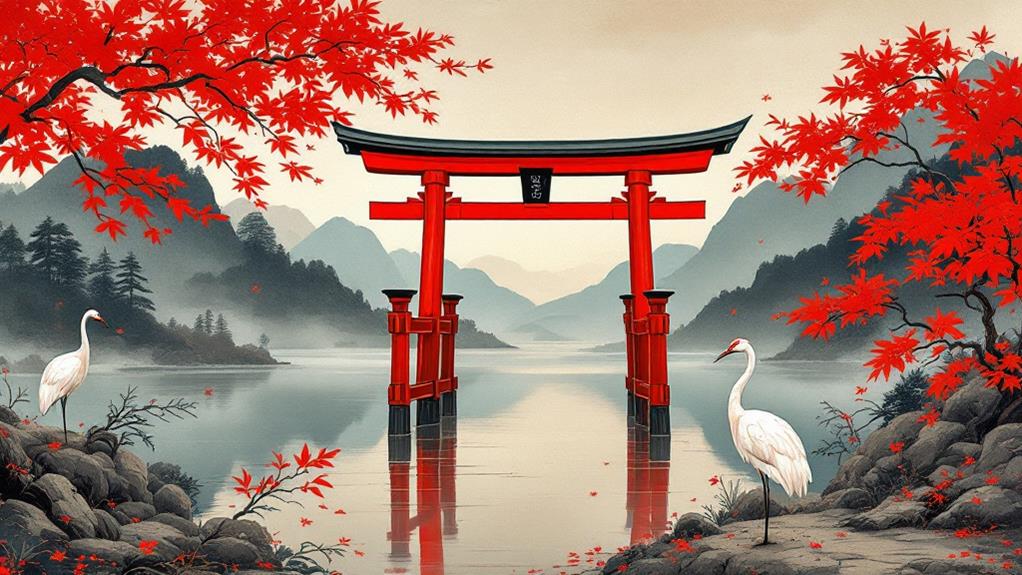
Lively and striking, the color red captivates the imagination in Japanese art, making it a vital element that breathes life into diverse forms of expression. When you investigate traditional Japanese art forms, you'll notice how red's brilliance stands out, particularly in ukiyo-e and calligraphy. In ukiyo-e, a genre of woodblock prints and paintings, red plays a significant role. Artists often use it to highlight key features, such as the intricate designs of a kimono or the vivid elements of a lively street scene. Red in ukiyo-e doesn't just add visual appeal; it also conveys emotions and themes, providing depth to the story each piece tells. Furthermore, the bold use of red in Japanese art can be linked to the expressive character designs in anime and manga, which also utilize bright colors to amplify storytelling. Likewise, in calligraphy, red ink is more than just a color choice; it's a statement. You'll find that red seals, known as "hanko," are stamped onto artworks to signify authenticity and artist identity. This use of red in calligraphy not only increases the visual impact but also connects the piece to its creator.
Influence of Red in Fashion
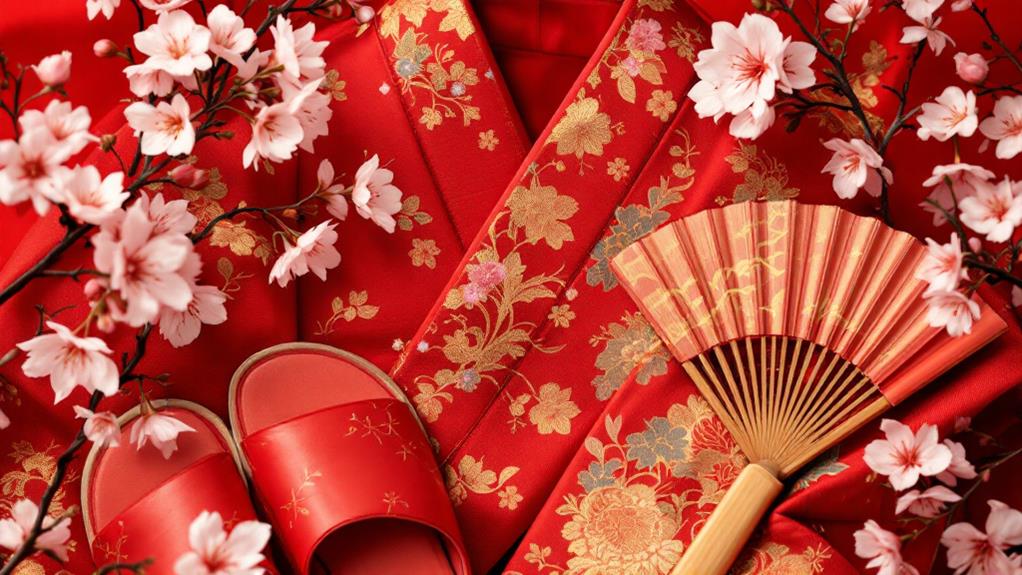
Japanese culture's lively palette extends beyond art and deeply influences the world of fashion. The color red, in particular, holds a significant place. When you examine red fashion trends in Japan, you'll notice how designers integrate this dynamic hue to convey emotion and style. Red isn't just a color; it's a statement. It's often associated with energy, passion, and life, making it a bold choice for any wardrobe. The use of red in traditional attire, such as the kimono, reflects its cultural significance, where patterns and motifs tell unique stories. This lively color is not only a visual delight but also a symbol of liveliness and good fortune.
Incorporating red into your fashion choices can transform your look. Consider these elements:
- Scarlet kimonos: Symbolize elegance and tradition, perfect for a sophisticated touch.
- Crimson handbags: Offer a pop of color, highlighting your ensemble's focal point.
- Cherry red shoes: Add a playful, yet powerful punch to any outfit.
- Ruby jewelry: Infuse luxury and a sense of timelessness.
- Vermilion scarves: Provide warmth and a dash of liveliness.
The red accessories significance in Japanese fashion cannot be overstated. They're more than just decorative; they're cultural symbols of liveliness and luck. By embracing red, you connect with a rich tradition that celebrates life through color, inviting confidence and creativity into your personal style.
Red in Festivals and Celebrations
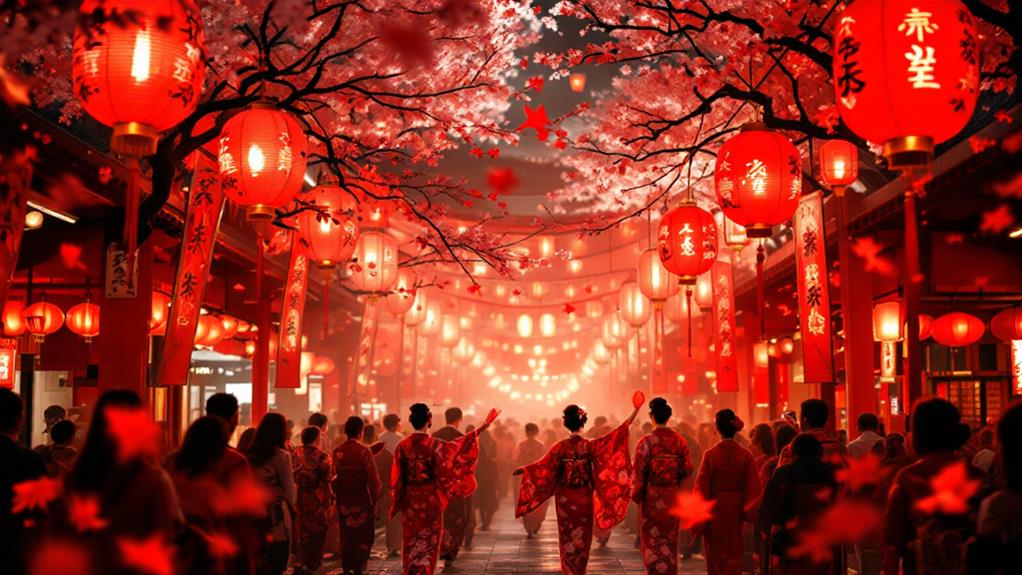
In many Japanese festivals and celebrations, the color red plays a crucial role, often symbolizing happiness, prosperity, and protection. When you attend these lively events, you'll notice the abundance of red decorations enhancing the festive atmosphere. Bright red lanterns, banners, and flags are common sights, creating an aura of joy and excitement. These decorations aren't just for show; they are deeply rooted in tradition and belief, thought to ward off evil spirits and bring good fortune to those celebrating.
As you delve further, you'll find that red foods are an integral part of these celebrations. From red bean mochi to red rice, these dishes aren't merely for their delicious taste but also for their symbolic significance. For instance, red bean mochi, often enjoyed during New Year's celebrations, represents the wish for a prosperous year ahead. The color red in these foods is believed to have protective qualities, ensuring the well-being of those partaking in the feast.



